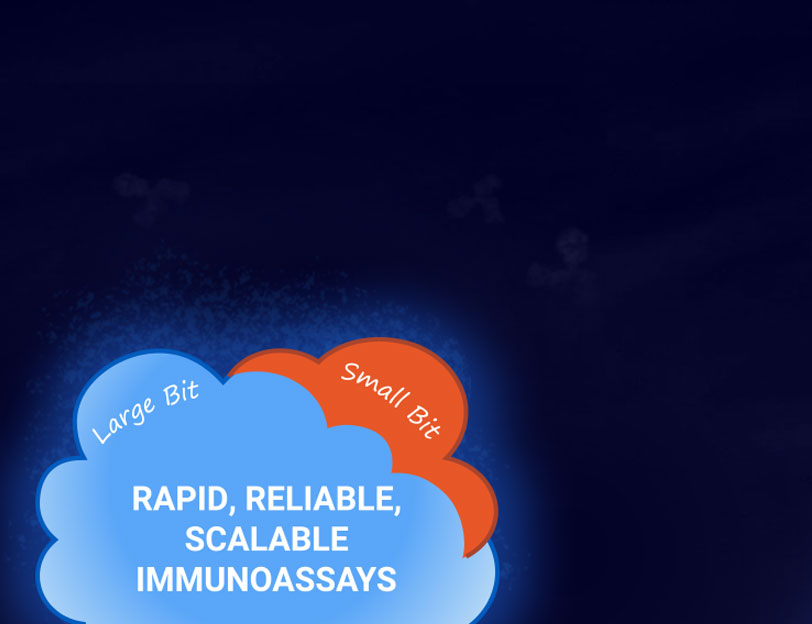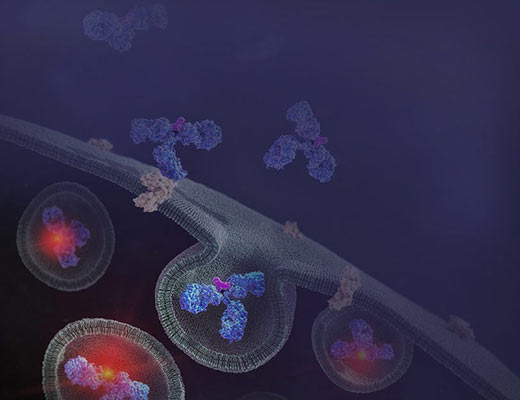Antibody Labeling
We offer reagents for labeling antibodies with NanoLuc® and NanoBiT® luciferase technologies for use in bioluminescent immunoassays. NanoBiT® technology is the basis for the Lumit™ Immunoassay platform, allowing users to label antibodies to create no-wash immunoassays completed in 30–90 minutes using a plate-reading luminometer. We also offer pH-sensitive fluorescent dyes that are used to label and track antibodies in internalization assays.
Filter By
Shop All Antibody Labeling Products
Showing 3 of 3 Products
Introduction to Antibody Labeling Technologies
Antibody labeling is the process of linking an antibody to a chemical tag to detect, isolate or purify an analyte. Labeled antibodies are used in immunoassay methods including Western blots, ELISAs, flow cytometry and others to detect analytes. Promega bioluminescent options for antibody labeling enable high-throughput detection based on NanoLuc® or NanoBiT® technology.
NanoLuc® luciferase is a small (19.1kDa), stable reporter enzyme that generates a bright luminescence signal. The NanoLuc® Labeling System is used to chemically label antibodies with NanoLuc for use in direct, competition and indirect immunoassays. Learn more about NanoLuc® luciferase.
Lumit™ Immunoassays are based on NanoLuc® Binary (NanoBiT®) technology. NanoBiT is a structural complementation reporter designed for biomolecular interaction studies and is composed of two subunits, Large BiT (LgBiT) and Small BiT (SmBiT). When these subunits are fused to two interacting proteins, the subunits come into close proximity, reassemble into the functional enzyme and generate a bright luminescent signal. Promega offers several predesigned Lumit™ Immunoassays to detect specific analytes. The Lumit™ Immunoassay Labeling Kit is used to label antibodies and proteins with SmBiT and LgBiT to enable the development of custom Lumit™ Immunoassays. Learn more about Lumit™ technology.
pHAb Dyes are pH sensor dyes that have very low fluorescence at pH above 7 and a dramatic increase in fluorescence as the pH of the solution becomes acidic. These dyes are designed specifically for antibody labeling and can be used for high-throughput antibody internalization screening assays.



